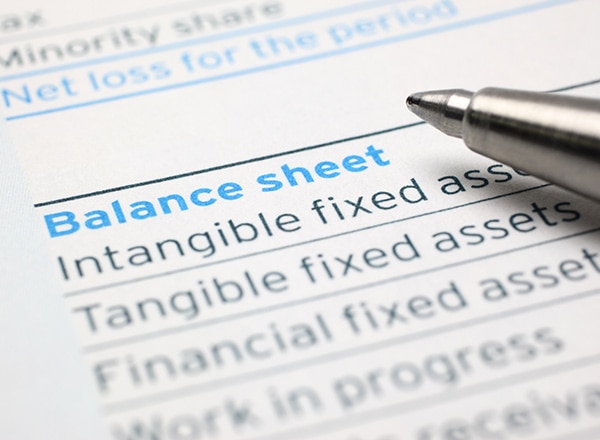Dedication, focus, and perseverance: you’re fully aware of these critical elements for a successful self-employed business. As you pursue your goals, do you sometimes feel as if the time and energy needed to do so are physically and mentally draining you? One of the most important, but often overlooked, components of self-employed advice focuses on how to maintain a healthy work and life balance. Once you achieve this, you will notice that your performance and business can both reach their full potential.

Does Work Life Balance Exist for the Self Employed?
Self-Employed Business Owners Set Their Own Work Hours
This study found that over half of self-employed individuals chose to enter this field so that they could improve their work-life balance. Ironically, they average 65 hours of work a week, with many starting the day before 8 a.m.
This can happen for a variety of reasons: they want to gain an edge over the competition, they may enjoy their job so much they lose track of time, or they may need to work more out of financial necessity. While flexibility is a benefit of being self-employed, it’s still helpful to set a schedule in place—even if you want to alter it a bit from day to day. As a start, you can try following the Canada Labour Laws work schedule of eight hours a day and an overall 40 hours in a week. That way, you can avoid burnout, while still making sure that all matters are taken care of. You can schedule these hours all at once or with breaks in between, but a 40-hour workweek is ideal.
Set a Leisure Schedule
Scheduling your leisure time may sound somewhat ironic, but playtime is just as important as working. Sure, you have no one forcing you to go to work, but you also have no one forcing you to go home at the end of the day. As a result, self-employed business owners can easily find themselves working around the clock, with no boundaries to protect their personal lives. Take advantage of your flexible schedule to block out time for a daytime pilates class from your favourite instructor or a weekday hike that lets you clear the work cobwebs out of your mind. Stepping back from work and participating in lighthearted activities tends to stimulate the mind and increase productivity. Play also reduces stress, which is a major factor in exhaustion and feeling overwhelmed. It’s important to schedule regular breaks along with your work hours; it may be helpful to keep fun gadgets or a crossword puzzle book nearby to optimize your playtime.
If you do creative work, it’s especially important to schedule time that allows your mind to wander freely, even daydreaming when you need to. Handling tasks are important, of course, but your best ideas for the future growth of your company may come from this unstructured time.
Create Your Perfect Work Space
Having a space that is separated from the everyday bustle in your home increases organization and productivity, which means more work can get done in less time. Your workspace doesn’t have to be elaborate, but try to incorporate the following elements for the best results:
- Multiple Areas – Beyond the desk, try to organize another space in your home office that’s more relaxed, where you can brainstorm and even enjoy some play time without straying too far and becoming distracted.
- Colour – Here’s your chance to get as far away from the bland cubicle as you possibly can. Scientific studies have found that the colour blue stimulates intellectual activity, while yellow encourages creativity, and green supports the emotional balance needed for working long hours. You can try to incorporate artwork, paint your walls, or add accents that feature these colours.
- Proper Lighting – Try to get as much natural light into your home office as possible. It’s also essential to supplement it with sufficient lighting to avoid eyestrain, especially after dark. You may even need mobile supplemental lighting for appealing video conferences.
- Noise-Control – It’s important to avoid distractions inside your workspace and beyond, so try to avoid rooms that are near household appliances, entryways, or heavy-traffic areas such as the kitchen.
Even after creating your ideal kingdom of productivity, you may also want to consider working off-site at times or explore a co-working space for a change of pace. This prevents the common, yet easily avoidable, issues of monotony and isolation that self-employment sometimes brings.
Create “To-Do” Lists
While your big primary goals are likely clear, the daily steps in between can’t afford to be overlooked. A daily to-do list keeps you focused, and keeps you mindful of small tasks that could easily get overlooked. You can diminish the chances of being overwhelmed by breaking certain tasks down into smaller steps, especially if you schedule them. While a “to-do” list is important, a “do-not-do” list also helps your productivity. Items on this list include things like redoing a task that you already completed to satisfaction or constantly checking your inbox for a response to an email.
Disconnect Sometimes
The line between productivity and distraction can begin to get blurry with the use of computers and smartphones. Once you get distracted, you’ll have to take more time to get the job done, creating a disruption in your work and life balance. Here are some ways to unplug while maintaining productivity:
- Delete Social Media Apps– One curious look on someone’s social media page can take you down a time-wasting rabbit hole for hours. If social media use is a part of your workload, it may be helpful to only download the apps during certain times for posting and interactions. An additional benefit to this method is that you won’t overbear customers and colleagues with daily notifications.
- Use Website Blockers– Using the Internet is essential, but you don’t have to waste time on websites that reduce productivity.
Set Money Aside for Slow Periods
Every business experiences crunch times and slow periods. The only difference is that when you’re self-employed, you don’t keep getting paycheques during quiet periods. You can add to your peace of mind by setting aside income during your busy periods to cover your expenses when things slow down. Having a little bit of financial cushion can keep you from making poor decisions just because you need an influx of immediate cash.
Best Self-Employed Advice: Just Say No
While the freedom to spend more time with family and friends is a bonus for self-employed individuals, being too accessible can also be detrimental to your productivity levels. It’s essential to recognize the value of sticking to your schedule, even if it’s self-imposed. There’s nothing wrong with saying no once in a while, or asking if you can schedule something for a later time. Saying no can apply just as easily to catching up with a friend who suddenly informs you they’re in town as it does to something work-related like taking on a last-minute project. These instances could create an overload or backlog of work which requires overtime to complete — resulting in work-life imbalance.
Utilize Task Management Tools
There are several software programs that can help you make the most of your business hours. Some are free, and some charge a nominal fee:
- Project Management – Trello is a popular, user-friendly program that represents tasks with graphics and visuals. While the free version suits many needs, the paid version is often used for more complicated task management.
- Bookkeeping – QuickBooks is an intuitive program that focuses on small business concerns like expense management, invoice creation, and other core accounting needs. It also syncs well with programs like PayPal, Receipt Bank, and more.
- Communication – Addappt is a comprehensive app that’s great for self-employed individuals who correspond with colleagues remotely. It has texting and emailing capabilities, and it also updates any of your contacts’ information as soon as they do.
Hire Help When You Need It
You may be self-employed, but that doesn’t mean you can’t get some help when you need it. It’s all too easy to fall into the trap of believing that if you want something done right, you have to do it yourself, but that’s often a fallacy for the self-employed. Tasks like shipping and delivering, ordering supplies, and keeping your workplace clean can all drag you away from the tasks that only you can do. You don’t have to hire a full-time employee to get the help you need. Consider bringing on temporary assistance during your busiest seasons, or hire an assistant for a few hours a week to handle repetitive tasks and paperwork. Just a little extra help may make it possible to maintain a healthy work-life balance within your self-employed business.
Maintaining a healthy work and life balance is a reality for the self-employed business owner. You can achieve this by reminding yourself that safeguarding your time is very important. Thankfully, there are many resources to assist you along your way. Want assistance organizing and optimizing your business? Try QuickBooks Self-employed.


